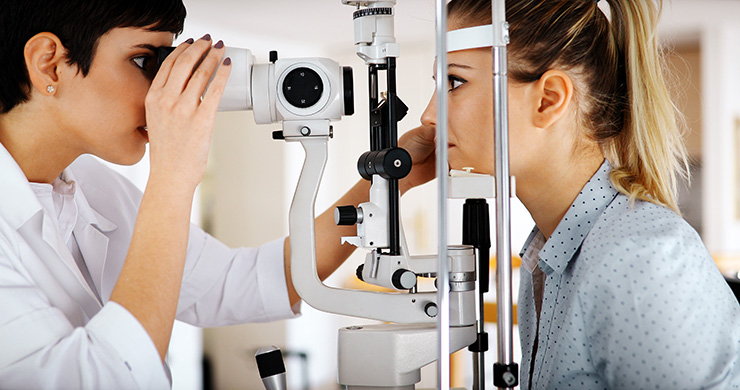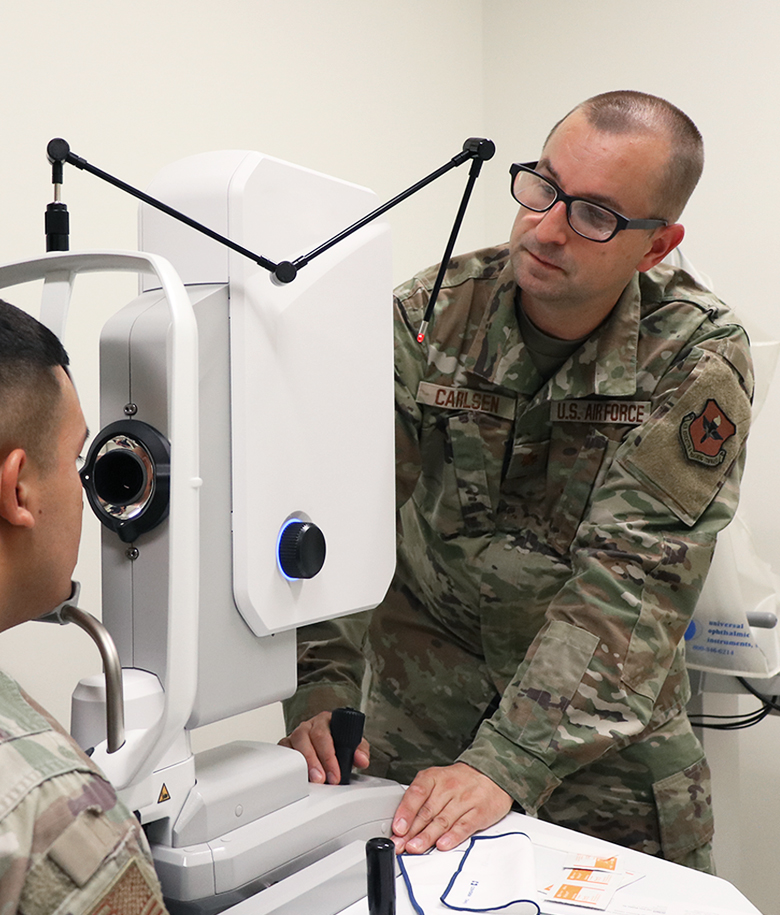Experience Personalized Treatment with Opticore Optometry in Chino
Exploring the most recent Technological Advancements in Optometry and What They Mean for Eye Doctors
From the precision of Optical Coherence Tomography to the nuanced insights offered by AI-driven diagnostic devices, these developments are establishing brand-new requirements in client assessment and treatment. As these improvements penetrate the practice, optometrists are faced with the difficulty of accepting these tools to enhance client results.
Technologies in Diagnostic Tools
Progressing the area of optometry, innovations in analysis tools have reinvented the means eye treatment specialists analyze and detect ocular conditions and visual problems. The past decade has observed considerable technological advancements, allowing more extensive and accurate analyses.
An additional secret technology is the introduction of innovative corneal topography systems, which map the surface curvature of the cornea with accuracy. These tools are specifically helpful for fitting get in touch with lenses and detecting corneal disorders. Electronic retinal imaging has changed typical ophthalmoscopy, using comprehensive, breathtaking sights of the retina that facilitate extensive visual exams.
The development of wavefront aberrometry has actually also been essential, making it possible for the evaluation of refractive mistakes with unmatched accuracy (Opticore Optometry). This modern technology helps in personalizing rehabilitative lenses and boosting medical end results for refractive surgical treatments. Collectively, these diagnostic developments encourage eye doctors to provide remarkable client treatment, making sure very early treatment and tailored treatment strategies, ultimately improving aesthetic wellness end results
AI in Person Administration
Building on the foundation of cutting-edge analysis tools, the consolidation of man-made intelligence (AI) in patient monitoring stands for a transformative jump for optometry. AI systems are increasingly used to enhance performance, accuracy, and customization in client care.
Additionally, AI-driven platforms promote streamlined person communications and management processes. Automated organizing, digital examinations, and personalized follow-up plans not just boost individual fulfillment but also maximize time monitoring for specialists. These systems can triage clients based on the seriousness of their problems, ensuring that those in essential requirement obtain prompt attention.
Moreover, AI improves decision-making by giving optometrists with evidence-based suggestions and treatment pathways. By integrating data from electronic wellness documents, AI devices offer insights that educate clinical decisions, minimizing the threat of errors and improving client results. As AI remains to advance, its function in individual management will likely broaden, improving the landscape of optometric treatment.
Breakthroughs in Retinal Imaging
In the world of optometry, retinal imaging has seen impressive technical developments that are enhancing diagnostic capacities and individual care. Advancements such as Optical Comprehensibility Tomography (OCT) and fundus photography have actually revolutionized exactly how eye doctors imagine and assess the retina.
Improved imaging modalities like OCT angiography are further refining diagnostic precision. This non-invasive strategy maps blood flow in the retina, using critical insights right into vascular wellness without the requirement for color injections. In addition, flexible optics technology is being incorporated into retinal imaging systems to deal with eye aberrations, providing unprecedented photo quality. Such innovations assist in the identification of min retinal modifications that could indicate disease development.
In addition, improvements in fabricated knowledge are augmenting retinal imaging by enabling automated analysis of big datasets. These systems assist optometrists in identifying patterns indicative of pathology, thereby improving diagnostic precision and performance. Collectively, these innovations are transforming retinal imaging right into a cornerstone of modern eye treatment, improving results and expanding healing opportunities.
Teleoptometry's Growing Role
Teleoptometry is progressively becoming a crucial part of eye treatment, driven by innovations in electronic communication and diagnostic tools. As optometry welcomes digital change, teleoptometry facilitates remote examinations, permitting optometrists to prolong their services beyond traditional boundaries. This is especially useful in rural and underserved locations where access to specialized eye care is typically limited. By leveraging high-resolution video conferencing and progressed retinal imaging, eye doctors can carry out extensive eye exams from afar, making sure timely diagnosis and therapy.
The assimilation of synthetic intelligence (AI) further enhances teleoptometry, allowing the evaluation of aesthetic data and helping in the discovery of eye conditions such as glaucoma and diabetic retinopathy. AI-powered formulas can swiftly analyze complex imaging data, offering optometrists with beneficial insights that bolster medical decision-making.
Additionally, teleoptometry sustains continuity of treatment with smooth assimilation with electronic health records (EHRs), enabling eye doctors to keep thorough client backgrounds. This guarantees that patients obtain personalized and regular treatment also when seeking advice from different professionals.
In spite of these benefits, obstacles continue to be, including ensuring data protection and handling person expectations. Teleoptometry stands for a significant stride in the direction of more available, effective, and patient-centered eye care. As technology progresses, its function is poised to expand even more.

Future Fads in Eye Care
A myriad of innovative fads more info here is readied to improve the future of eye care, driven by technical improvements and the developing needs of patients. One substantial pattern is the combination of expert system (AI) in diagnostics, which assures to improve the precision and efficiency of eye examinations. AI formulas can examine substantial quantities of information from retinal images, potentially finding problems like diabetic retinopathy and glaucoma earlier than conventional approaches.
Additionally, tailored medication is obtaining traction in optometry, with hereditary screening notifying tailored therapy plans. This technique aims to optimize client results by customizing treatments to specific genetic profiles. Wearable modern technology, such as wise call lenses, is additionally on the perspective, providing real-time monitoring of intraocular pressure or sugar levels, hence providing constant understandings into systemic and eye wellness.
The fostering of enhanced reality (AR) and digital reality (VIRTUAL REALITY) in training and client education and learning is another arising trend. These innovations offer immersive experiences that can improve understanding and skills both for people and eye doctors. As he said these trends advance, optometrists must remain abreast of technological developments to offer innovative treatment, ensuring improved person results and contentment in the vibrant landscape of eye treatment.
Conclusion

Collectively, these diagnostic advancements empower eye doctors to supply premium person care, guaranteeing early intervention and customized treatment techniques, inevitably boosting visual health and wellness end results.

As these technologies continue to evolve, eye doctors should adjust and include them right into method, ultimately maximizing operations performance and boosting the criterion of eye treatment delivered to clients.